South Korea #8 – Andong – Bows & Swords – December 2014
A light dusting of snow left no doubt that winter was on the way. Our Espar Airtronic heater kept the camper warm and toasty. We waved goodbye to the mask carvings outside Hahoe Village and proceeded to the nearby city of Andong to visit the Andong Folk Museum to learn more about the region’s unique traditional and cultural history. We found a fabulous collection of over 7000 artifacts and several displays with life-size figures that really gave us a great feeling of how people dressed as they performed the tasks of their traditional lives such as funeral rites and weddings.
Andong Folk Museum
Adjacent to the parking lot for the museum there was another display of old traditional homes. When the Andong Dam was created in 1976, the resulting lake would have submerged many cultural relics. Instead of leaving them to an underwater grave, the buildings and historical artifacts were moved to the museum’s outdoor space to create a park and the Andong Folk Village. Unlike the Folk Village of Hahoe, these homes were just on display. No one lived in them.
The Yechon Bow of Korea
Walking back to the parking lot where we had camped for the night, we stopped to watch a gentleman practicing his archery. After letting us try a few shots ourselves with the unique Korean bow, strung a little lighter for tourists, Nam Hee-Jong demonstrated how easy it was to hit the bull’s-eye every time.
We learned that there are three main kinds of bows used in archery in the United States and Europe: the re-curve bow, the compound bow, and the straight bow. To these we can add the Yechon bow of Korea. The keratin bows made in Yechon have long been standard for hunting, archery, and we might presume, for battle. Unlike most present bows that are made of wood and fiberglass, the artisans in Yechon during the Joseon Dynasty developed advanced techniques to make bows from a combination of wood, animal horns and tendons. In the final stage, the craftsmen grafted the bow with the thin inner bark of the white cherry tree. The core of the bow consisted of several layers of wood and horn that had been laminated. Fish air bladders were used as glue. Three kinds of wood, (bamboo, oak, mulberry), and cattle tendons were produced locally. Water buffalo horns were imported.
The Traditional Military Honor Guard
In talking with Nam Hee-Jong we discovered that he was a member of the Traditional Military Honor Guard who protects the president and performs official duties. This sector of the Korean military practices four disciplines: bow & arrow, various swords, fist & kick and riding horses. He offered to show us some of his talents. The swords he twirled as he leaped and danced in the demonstration courtyard were razor sharp.
Faster than the eye could even follow, he sliced off sections of very tough 2” bamboo, spinning around to whisk off a second or third piece. We could easily imagine that in a real battle these swords could lop off a man’s arm or head in an instant. He also demonstrated a different kind of blade called a “pole weapon”. It too was as sharp as a razor but weighing some 20 pounds. We watched as he impressively twirled around, clipping off pieces of the bamboo, sometimes catching the cut sections in midair and slicing them in half again.
Moonshine Bridge
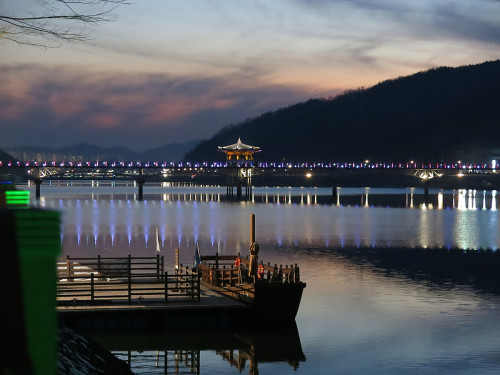
As an Asian dusk spread across the sky we strolled over the Wolryeong (Moonshine) Bridge, the longest wooded bridge in Korea.
Back on the modern highways we were still adjusting to the polite drivers and European-style tunnels and tollgates. Only the occasional memorial grave markers near villages where neat rice fields spread out toward a blue East Sea (Sea of Japan) and the bilingual road signs reminded us where we were. Passing a Starbucks or a Baskin Robbins ice-cream parlor would bring a smile, but no feeling of homesickness. While South Korea boasts the highest Internet speed in the world, some of their wiring did make us wonder.
- A light dusting of snow left no doubt that winter was on the way.
- The Andong Folk Museum had several displays with life-size figures that really gave us a great feeling of how people traditionally dressed. During the Joseon Dynasty there was a basic form of the Korean costume. Decorations or colors changed depending on the status of the wearer.
- Elementary education was taught in schools though wealthy families often joined together to hire a private teacher to educate their children.
- Some of the Mituri or straw shoes styles reminded us of those we had seen in European Russia. Others resembled Dutch clogs.
- The distilling of Soju, a strong clear spirit from rice similar to vodka, is an old Korean tradition. Ingredients include ground yeast, steamed rice and fresh water.
- The spinning of flax yarn made from hemp fibers was widely used for ropes, twines, carpet thread, carpet yams, sailcloth, coarse sheeting and towels.
- After steaming the hemp stalks for several hours and then soaking them in cold water they become very soft.
- In Korean tradition, a 60th birthday is a very special day as the animal zodiac calendar, i.e. the year of the water dragon, starts anew. The children organize a huge party for their parents.
- In traditional Korean society, marriage is considered a major life event and the character of marriage is treated as a union of two households and clans rather than the marriage of two individuals.
- Traditional Korean funeral rites are an elaborate affair. This coffin carrier called Sang-yo is a great example.
- Doomed to an underwater grave when the Andong Dam was created in 1976, many historical relics and buildings were moved to the museum’s outdoor space to create a park.
- This beautiful stone bridge was carefully reconstructed in the Andong Historical Park.
- Before electricity, waterpower was used for grinding grain. Power from a water wheel was transmitted through an underground gear system to move the massive grindstone.
- Luci Gim, on the left, celebrating her birthday was so excited to be able to talk to us in English that she insisted on giving us each a carved necklace with the famous smiling Hahoe mask. It was typical of the Korean warmth and hospitality we experienced everywhere.
- The unique design of the Korean bow has the power of a modern compound bow. We can presume that its compact size and lightness came from the need to ride at full gallop and shoot with deadly accuracy.
- Unlike bows used in archery in the United States and Europe, the re-curve bow, the compound bow and the straight bow are usually made of wood and fiberglass. Artisans in Yechon during the Joseon Dynasty developed advanced techniques to craft bows made of a combination of wood, animal horns and tendons. These keratin bows have long been the standard for hunting, archery, and we might presume, for battle.
- In the final stage, the craftsmen grafted the bow with the thin inner bark of the white cherry tree. The core of the bow consists of several layers of wood and horn that have been laminated. Fish air bladders were used as glue. Three kinds of wood, (bamboo, oak, mulberry), and cattle tendons were produced locally. Water buffalo horns were imported.
- Nam Hee-Jong, a Traditional Military Honor Guard, gave us a quick lesson on how to hold and aim a Korean keratin bow. We were not very good.
- The swords Nam Hee-Jong twirled as he leaped and danced in the demonstration courtyard were razor sharp.
- The heavy “pole weapon”, this one called a “Blue Dragon” was lethal.
- As Nam Hee-Jong sliced off sections of very tough 2” bamboo, spinning around to whisk off a second or third piece, we could easily imagine that in a real battle both these swords and the “Blue Dragon” pole weapon could lop off a man’s arm or head in an instant.
- Nam Hee-Jong was a master in the sword discipline.
- A group photo of Nam Hee-Jong, his apprentice and the black-smith (who created the weapons) and his wife was a must. The apprentice shyly asked if he could hold Monika’s arm.
- Wolryeong (Moonshine) Bridge is the longest wooden bridge in Korea. Pedestrians only thank you!
- As an Asian dusk spread across the sky we strolled over the Wolryeong (Moonshine) Bridge, the longest wooded bridge in Korea.
- Modern highways, tunnels and bilingual road signs made driving in South Korea a pleasure.
- The occasional tollbooths were very reasonable considering the quality of the highways.
- The Yin and Yang theory of negative and positive forces in life and death are an integral part of Korean believes, so it is essential to choose an ideal site for tombs. The mountain spirits focus into one point where slopes block the winds like a screen and where the water is in a favorable place.
- Neat rice fields spread out toward a blue East Sea (Sea of Japan) where our truck and camper would soon be sailing to California.
- Passing the occasional Starbucks or a Baskin Robbins ice-cream parlor made us do a double take of where we were.
- Even though Korea has the fastest Internet speed in the world, some of their wiring did make us wonder.



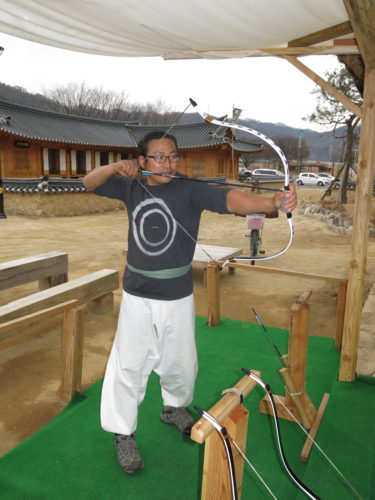
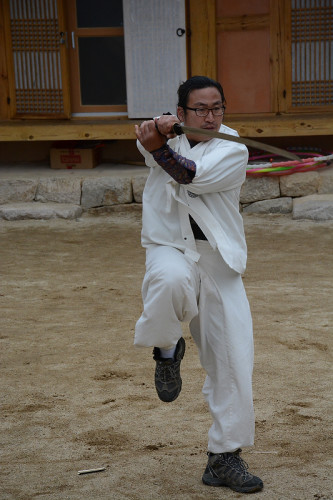
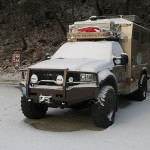
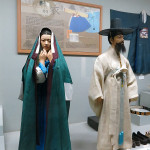
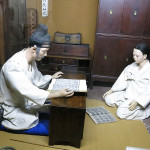
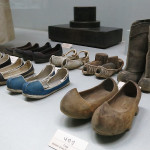
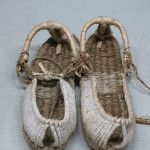
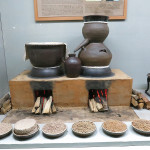
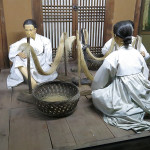
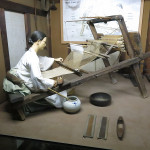
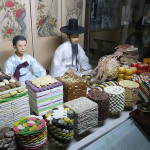
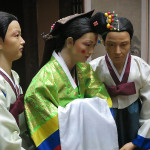
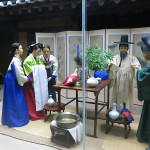
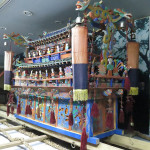
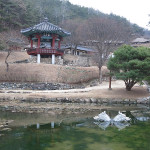
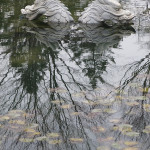
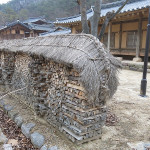
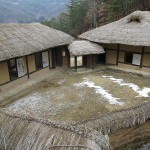
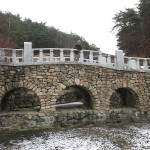
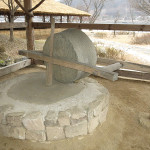
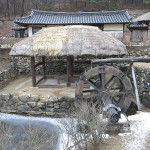
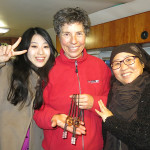
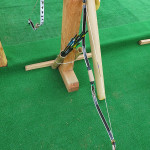
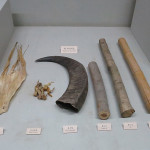
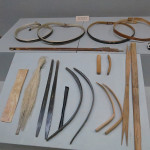
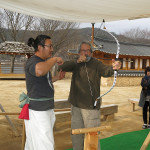
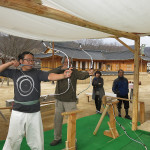
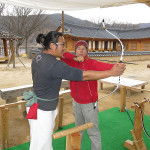
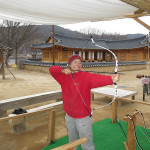
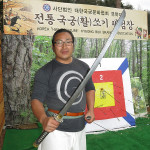
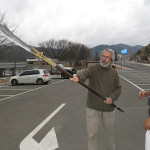
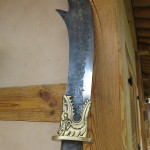
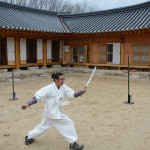
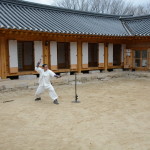
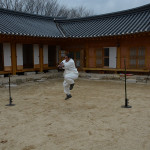
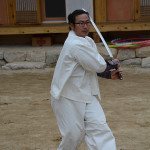
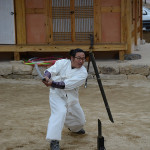
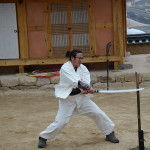
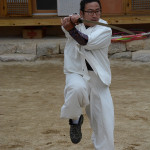
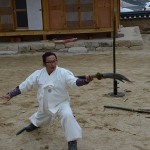
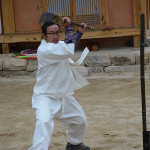
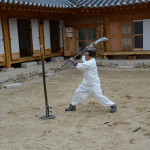
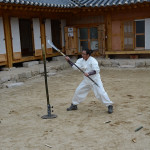
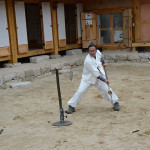
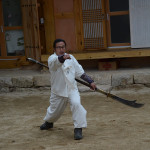
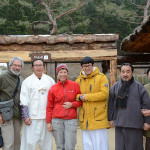
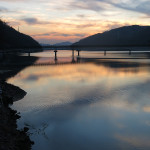
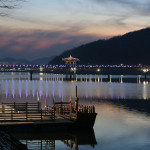
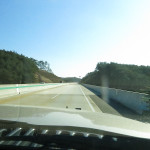
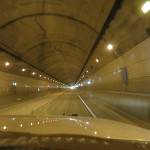
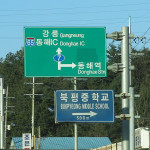
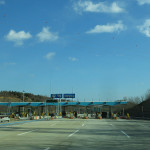
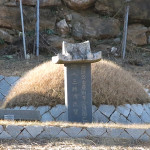
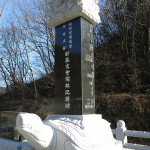
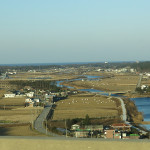
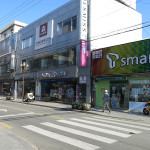
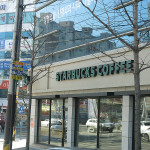
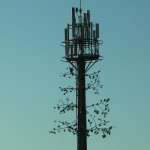
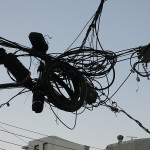





Leave a Comment